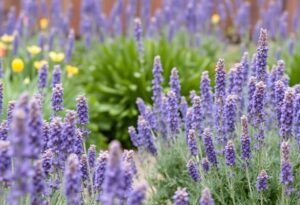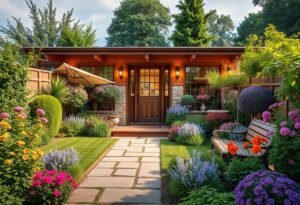What Colors Should You Choose for Your Garden?
The choice of colors in your garden should depend on the style you want to achieve. A garden color scheme can be created from a wide palette of shades—ranging from bright, energetic colors to muted, natural tones. Warm colors, like red or yellow, introduce energy into the space, while cool shades of blue or green evoke calmness and harmony. Choose colors based on the seasons, location, and the architectural style of your home.
Why Invest in Color?
Colors can not only change the aesthetic but also influence your mood. The right garden color scheme can create a positive ambiance conducive to relaxation and focus. Studies show that green lowers blood pressure and helps with relaxation, while bright colors boost energy. Investing in good color choices can yield both visual and emotional benefits.
Harmony of Colors – The Key to Success
Creating a harmonious garden color scheme is an art that requires an understanding of color principles. These principles help create cohesive compositions. You can start by choosing one dominant color and then selecting accent colors that will support it. The rule of three colors is a good way to achieve balance—one color can dominate, while two others complement it.
Natural Colors in the Garden
More and more people are opting for garden color schemes inspired by nature. Earthy tones of brown, beige, and gray easily blend with the greens of plants. Such a choice creates a garden that fits perfectly into the natural surroundings, ensuring all elements of composition work harmoniously together. Vegetation, materials used for surfaces, and garden furniture can all contribute to a cohesive whole.
Seasonal Color Changes
Gardens have the unique ability to offer new color displays with each passing season. A garden color scheme should take these changes into account so that throughout the year it continues to please the eye. Combining seasonal plants with evergreens allows you to maintain the space’s allure, which changes daily. Tulip blooms in spring, beautiful autumn leaves—different seasons offer an endless palette of colors.
How Colors Affect Space
Colors not only define aesthetics but can also visually enlarge or shrink a space. Bright garden color schemes make narrow gardens appear larger, while darker colors can create a cozy ambiance. Using light shades on large surfaces can create a sense of airiness, while darker tones work well where you want to foster a more intimate atmosphere.
Creative Garden Color Ideas
It’s important to follow your style and preferences when creating a garden color scheme. You can draw inspiration from emerging trends, but remember that personal tastes should take precedence. This could be a colorful nook with plants you love or the tranquility and harmony that comes from a monochromatic approach.
Conclusion
Let your garden reflect your character and style. Choose a garden color scheme that best reflects your expectations and helps create a space where you will want to spend time. Don’t be afraid to experiment and draw inspiration from nature—your garden can be a true work of art that will delight both you and your guests.
Disclaimer
This article is for informational purposes only. It’s always a good idea to consult with a professional before making garden design decisions.

















